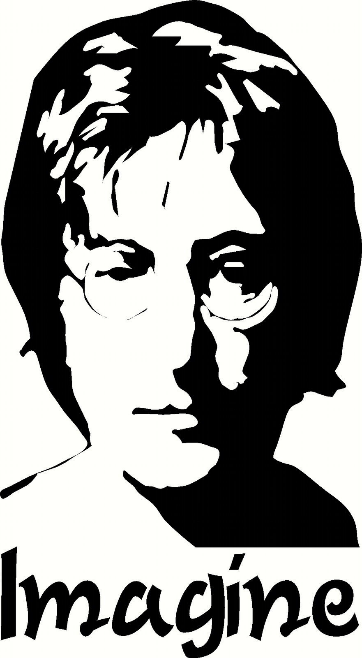The term Industry Plant is not new, and more and more artists are getting accused of being one, examples include Jack Harlow, Adele, Ice-Spice, Lorde, Lil Nas X, Cardi B, Bobbi Althoff from the overly awkward interviews with various celebrities, Chance the Rapper, and even Billie Eilish. However, what is this concept? In this article, I will delve into the ambiguous definition of Industry Plants, analyze some questions that arise when we try to define this notion, and briefly explore the dynamics of the music industry and why these phenomena appear.
Is it a definable concept?
The sources for the definition are far from scientific or academically reviewed, however since it is a term not commonly used by sociologists or scholars of the matter, I’ll have to rely on these ‘underground’ sources. According to Urban Dictionary, an Industry Plant is ‘an artist who has major/indie label backing their movement but presents themselves as a “home-grown start-up” label to create a pseudo-organic following. They act as if things miraculously happened for them based on their talent. The reality is a low-risk/high-reward situation for labels looking to build the next “new star”’. We need to break this definition down into two parts: Why does the consumer feel so strongly that they have been deceived? And how is this strategy beneficial for big labels?
Firstly, why do consumers immediately categorize some artists as industry plants when they, the artists, gain overnight success? Is virality not a thing anymore? In show business, especially in music, we gravitate to personalities that feel authentic, and we want to support them due to factual situations that they have been through. We feel some type of comfort when we see that an artist’s setback or struggle has, however small it may be, a connection with yourself, if you think about it, most likely, this relationship is present in your favorite artists. Since this connection with an artist takes time when people cannot pinpoint the moment when they saw the artist finally getting some recognition from other people or the industry, the notion of an Industry Plant appears.
By following this logic, an artist that has gone viral overnight is not credible and not even worth consuming? Noah Callahan-Bever, founder of Idea Generation, and a music industry icon, states that ‘Before you had the internet, it almost felt like artists came out of nowhere (…) All of a sudden they’re in The Source every month for three months in a row (…) unless you were super plugged into the industry, it was always like, “Who is this new person?”’.
The concept of virality is much more difficult to achieve nowadays, in part because of the high exposure to content we have through various platforms but also due to the high amounts of content being created and uploaded daily to those platforms. Therefore, it seems fair for suspicion to be raised when out of a sudden Bobbi Althoff, the previously mentioned podcaster, has Drake on her fourth episode. People believe this only happens with backing from large corporations, these being management agencies or music labels. A clear example of this is Coi Leray, who was featured on big playlists, which always brings a lot of exposure, performed at big, televised award shows but only managed to sell 10k copies of her sophomore album in the first week.
A very recent example of an artist being accused of an Industry Plant is R&B singer 4Batz. With only 3 released songs, the 22-year-old artist from Dallas, Texas, has quickly amassed a considerable amount of streams on DSPs (Digital Streaming Platforms) and a remix with Toronto’s very own, Drake. Its rough public image deceives consumers into thinking the sound of the artist will resemble something like a NLE Choppa, who raps about violence and firearms, however, the presence of a high-pitched voice creates a certain “wow” factor and seems to attract people, at least for now. What seems to be bothering some music fans is the fact that affiliations with big labels are present, with its manager being the lead creative director of RCA Records (owned by Sony Music), Amber Baker. Although all of its music is independently distributed, 4Batz’s affiliation with Amber supports the argument that there is an involvement of big labels in this, allegedly, fully independent artist.
Coming back to the idea of authenticity, modern audiences are captivated, more than ever, by personalities who present to them an idea of a spectacular journey that started from an ordinary beginning, in Hip-Hop especially. However, what big music labels seem to fail to understand is a fundamental aspect of Hip-Hop as a cultural movement, the artist’s growth not only in their art but as an individual and the duality of their past and present living conditions is more important than rapping or singing about “cool stuff” in trendy instrumentals. When Notorious B.I.G, Future, Kanye, Drake, and others, ‘flex’ on their, sometimes considered, shallow lifestyle is not to show that they have all these possessions per se but to demonstrate how they went from living in the Southside of Chicago to designing couture with head designers of famous French fashion houses, in the case of Kanye West. More specifically, it’s the journey of flipping the odds and overcoming the hardships of life that attracts people, and when commercial interests, generally of big labels overpower the need for authenticity, a discontentment among Hip-Hop fans arises.
Is the development of Industry Plants a good business opportunity for big labels?
On superficial analysis, we quickly realize that it is much cheaper for labels to develop an artist from the ground up since signing them has less demand from competitors, and bidding wars between labels are less likely to happen. Not to mention, the investment that happens when labels sign an already established artist. During the Soundcloud era, labels would say an artist gained a following on the platform, but they were signed to a label before that. In theory, this is a great way of labels making a buck, but in reality, it is not that simple. The public normally realizes when they are being ‘fed’ a manufactured act. According to an article by Billboard Pro, outside of Olivia Rodrigo and Ice Spice, there are no artists to break through the industry. However, this is not because they developed artists in the past, the causes are much more worrying, as previously explored.
Conclusion
From all the examples given and the nuances analyzed, I can conclude that, regarding the accusations of artists being Industry Plants, if the success of the artist is documented, people do not seem to care as much about authenticity, however, if it appears out of nowhere, the relevancy of the artist itself is put into question. That is one of the reasons why labels do not just manufacture artists to cater to the market needs, as we have seen in the case of Hip-Hop with its growth as a genre in the 2000s, but a recent decline, in part, because of a ‘dumping effect’ of music, but also a lack of authenticity in the artists being pushed and backed by labels.

Francisco Agostinho









